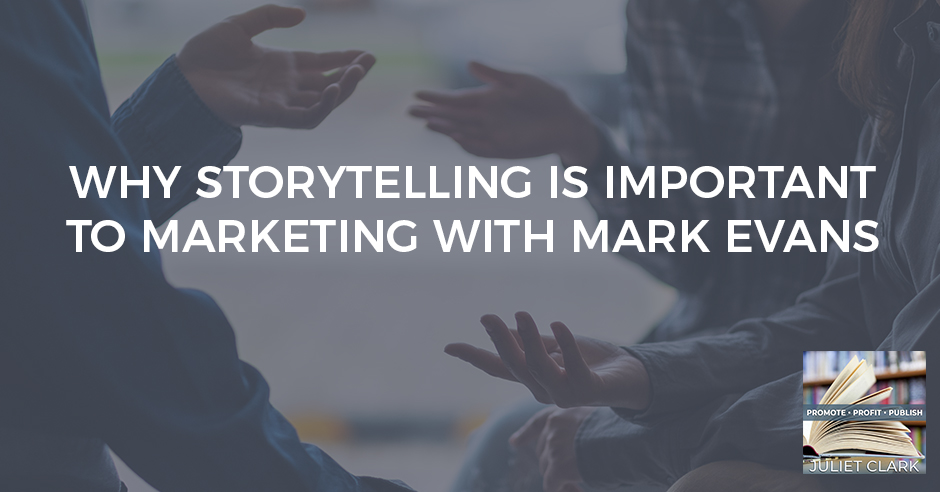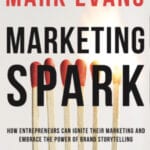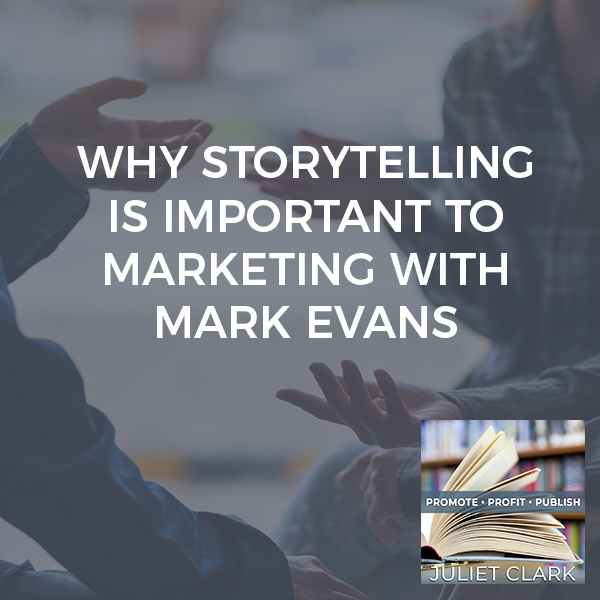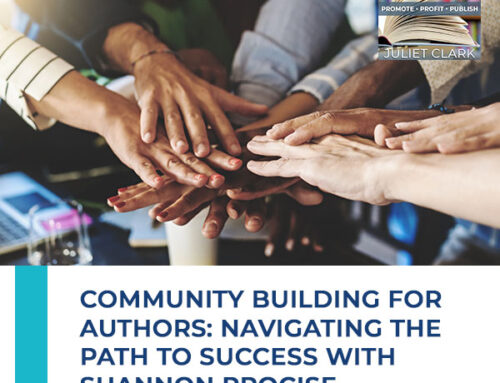
Many companies in need of senior leaders often struggle to find one because of the costs. Many times, these senior leaders are expensive. Borne out of this challenge, we now have what is called a fractional officer. In this episode, Juliet Clark helps you understand what this emerging position is by sitting down with Mark Evans, a Fractional CMO or a Chief Marketing Officer for a fast-growing B2B and SaaS company looking to attract and engage better prospects. Here, Mark explains to us the nature of his job, how it is cost-effective, and why it is growing to become a more attractive option. He then takes us into his expertise with his books about storytelling and marketing, highlighting the importance of using stories to attract people and, more importantly, connecting with them. Join Mark as he shares more wisdom and expertise in this conversation.
—
Watch the episode here
Listen to the podcast here
Why Storytelling Is Important To Marketing With Mark Evans
Our guest is Mark Evans. He is a Fractional CMO or a Chief Marketing Officer for a fast-growing B2B and SaaS company looking to attract and engage better prospects. His areas of expertise include brand positioning, storytelling, strategic planning, and tactical execution oversight. He has published three books about marketing and storytelling and he produces a weekly podcast called Marketing Spark which is about fifteen minutes. It’s an easy listen. He does interviews with marketers and entrepreneurs about the lessons they’ve learned in the trenches. Welcome, Mark.
Thank you, Juliet. It’s nice to be here.
Let’s start with what is this fractional CMO? I’m seeing a lot of fractional officers in the marketplace. Can you explain a little bit about that?
The reason why fractional is becoming popular is that senior leaders are expensive. A Chief Marketing Officer is $150,000 to $200,000 a year plus benefits, perks, and everything that goes with that. A lot of companies want senior leadership, but they don’t want to pay that much money. The same goes for chief financial officers or the head of sales. A lot of small companies that want to grow and tap into expertise and experience want that expertise, but they can’t afford it. The alternative is to get somebody for a couple of days a week or half time and you enjoy the best of both worlds.
You get somebody who’s cost-effective and you get some flexibility if that person doesn’t work out or you have to use them in different ways, you can do that and you get somebody who’s been there done that. That has a lot to do with the rise of fractional and also, as important, a lot of companies cut back on their senior management teams. The economy looked like it was going down and over a cliff, a lot of companies did what they needed to do and they cut back. Now, they’re recognizing that they need to move forward and need some firepower. That’s why fractional is becoming a more attractive option.
It’s not just the marketing industry. People are doing it with their accounting teams. A lot of people I know like lawyers are coming in like your fractional legal counsel instead of a retainer and the big money deals they used to have before. It’s many hours a month. From a standpoint of what you and I do, let’s talk a little bit about our benefits from it because I do a little bit of it as well. Probably not as much as you, I only have one account. I love the flexibility. I don’t have to go to the office. What are some of the stuff you love about doing it?
The flip side to what companies want is what employees or people like us get. We want to have that steady engagement, but we don’t want to go to the office. We don’t want a full-time gig because we also want the flexibility to do other work or side hustles or spend time with your friends and family. All the good things that go along with that. The benefit to me is that I like to be the master of my own domain. I don’t want to work for one person although it’s nice being invested with their particular company so that you can see them progress and you can watch them improve. At the same, time for me, variety is the spice of life. It keeps me interested and engaged. It’s the work-life thing that I want to do now. I’ll never go back to a full-time job.
I don’t think I would either. I love the variety of it too because inside OF Corporate America, you can get bored with what you’re doing. Working on several different accounts gives you a lot of variety. You stay excited and engaged with it.
It’s a win-win proposition because as a senior leader, marketer, salesperson or financial person, you get to dabble in lots of different things. You get to work with many different entrepreneurs, take on different types of challenges. On the flip side, the companies that you work with get you “been there, done that” experience. You see lots of different scenarios. A lot of the challenges that they’re running into, you’ve already seen them. You have some knowledge and some insight into how you can effectively help them. That’s why fractional is such a good model. You’re going to see a lot more of that because a lot of people want to do their own thing but they don’t want to fly the solo flag. They want the best of both worlds. There are benefits for both sides and as our economy remains volatile, that model is going to work the best.
Tell us a little bit more about your books. You’ve written books on storytelling and marketing. Storytelling is important especially if you’re an author because there has to be a little bit of storytelling to keep people engaged inside of the book.

Storytelling And Marketing: You have to sell a product that your customers want to buy. Your marketing needs to reflect their needs, interests, questions, goals, and everything to do about them, not about you.
Many years ago, I was a newspaper reporter. Professionally, I wrote stories for a living. I wrote about technology and turned complex technology into things that were accessible so that everybody can understand the impact of technology and why it made a difference. That was a great training ground for me to become a storyteller. What I’ve done in terms of marketing and helping clients is turn their products, people, and vision into user-friendly stories that a broad audience or a specific audience can get excited about. I often think of storytelling as doing four things. One is around Educating, Engaging, Entertaining, and Encouraging. Those are the four Es of storytelling. If you can do one of those along the way with your sales and marketing, then you’re being successful.
You’re going to turn prospects into clients, but if you can do more than one, if you can engage and entertain at the same time, then the funnel becomes a lot more smooth. There’s less friction. To get the people from tip to toe from prospect to the customer becomes a lot easier. A lot of companies are still getting their heads around storytelling like, “How do I do it? Why do I do it? Who gets to tell the stories? Who do I get to tell them to?” As much as we talk a lot about brand storytelling, a lot of companies are still in the early stages of trying to master it.
Storytelling extends to more than the books or your marketing. I saw a speaker and it was his first time speaking, telling his story. He could have used you because he’s a high-level business person, but you could tell he hadn’t had any training. The story was there but the value add wasn’t. It was a choppy story. I could see with a little bit of polishing, it would have been inspirational. How do you do that inside of the story when you have your story but needs a little cleanup?
One of the things you had to think about is, “What does the audience want to hear? What’s going to engage the audience?” When you think about when you were a child and you listened to stories, stories were dramatic, interesting, and made you curious. You didn’t know what was around the corner. They had you unwrap the tension. The fact of the matter is that people don’t like facts don’t remember the facts. Facts are important, but they’re boring. Stories are interesting. Let’s say Airbnb for example as a company that most people can relate to. The fact of the matter is that Airbnb allows you to efficiently book places to stay online around the world. If you want a place to stay, you go to Airbnb.
That’s a fact. It’s also a boring story. If you’re trying to excite people and inspire them about travel and about using your service, the Airbnb story is through Airbnb, you can experience different places in different people. You can get a sense of belonging anywhere you travel around the world. That’s the Airbnb story. That’s the inspirational, encouraging, exciting story about Airbnb. Base tell stories around that theme, around the fact that as a traveler, you can have these experiences. As a host, you can also have these great travel experiences, meeting new people, and doing new things.
Storytelling is about the experience delivered by your product, not the product itself. If you were going to tell a story, for example, about a blender, a common kitchen utility. The blender can purée, chop, blend, and do all things, but the story could be that you could use it to make healthier foods and then you could lead a better lifestyle. You can have more energy and spend more time with your family. That’s the inspirational story. It’s a different way of looking at the world. As a journalist, it comes naturally to me.
As for many marketers and salespeople, it’s a little more difficult. We spend about 60% of our time telling stories. Think about what you do on the weekend when you talk to your friends. Did you tell them the facts about your life? No. You told stories about your life, things that you did, movies that you saw, and all those things that made the conversation interesting. We have to take that same approach and apply it to business.
I didn’t even think about that, that we tell stories in our every day, although I have a raunchy sense of humor. Things turn out funny. Tell us about books. What were your three books about?
The first one was at the height of the dotcom called Investrends. It was about how to invest in dot-com stocks. About a month before the book came out, the stock market crashed. That didn’t work out. It’s a sad story, but it’s a good story. In the last many years, I wrote one called Brand Storytelling and Marketing Spark. They have a common theme. It’s to how to leverage the power of story in different channels, in different places. There are the fundamentals of storytelling, the things that we’ve talked about a little bit about how to embrace storytelling and how to have that storytelling approach, how to think about experiences to your prospects and customers.
The second part of the book is how to apply it to different marketing channels whether it’s a video or your website or infographics or email marketing or all the things that are the nuts and bolts of everyday marketing. I’m trying to connect the dots to this whole concept of storytelling, which sometimes becomes lofty and harder to embrace the realities of where and how you tell stories. If you’re sending out an email to somebody or you’re writing a blog post, you’re creating a story. It’s something that is designed to engage and inform people.
The books are prescriptive. There are lots of worksheets and tools. I consider it more of a workbook than a book. It’s a book that sits on your desk so that if you’re an entrepreneur and you want to do different types of marketing, then you’ll go to the book and go, “How do I do this? These are best practices. Here are some great tools. Here are some worksheets that are going to guide me through it.” It’s to do it yourself book for a lot of people who don’t want to hire or can’t afford a marketing agency or person, but you still got to do marketing and stories. That was the audience that I designed the book for.
We get a lot of people who don’t know anything about marketing. It’s a little bit frustrating. Sometimes that sounds like a good starter book for them. I had a class a while back where I taught basic marketing and I teach it in a different way. You have to go for the relationships and a click is not a relationship. Would you agree with that?
I read a book by Terry O’Reilly. He’s a well-known Canadian advertising executive. It’s called This I Know. In the chapter, he made this amazing statement that’s completely obvious. He said that “People buy products from people, not companies.” When you buy something, it may not be an online service or something, but when they buy your service, they’re not buying your service, they’re buying you. They want that experience, expertise, and to feel that they’ve made the right decision because they have a relationship with the right person. It’s the same for my business because there are lots of other marketers out there. Why would they hire me? It’s because they buy the relationship, sense of trust, and sense of confidence.

Storytelling And Marketing: Marketing Spark: Embrace the Power of Story-Driven Marketing – https://www.marketingspark.co/marketing-spark-book/
Especially, for small and early-stage companies, a big part of the story is the founder entrepreneur, making them front and center, putting their face to a company is important because as a customer, you want to feel like you’re dealing with somebody that you can believe in. For example, think about it when you go to your favorite restaurant. The food and the atmosphere may be okay, but why do you go? It’s because the person who owns a restaurant greets you in such an amazing way. They remember your name, the names of your kids, and the things that you’re into. That’s that relationship right there. You can combine storytelling and relationships. It’s a powerful 1,2, punch.
This is important because, over the last many years, we’ve got invested in clicks. We were led to believe that clicks are relationships. That’s where a lot of entrepreneurs get off track because they think, “I have this great funnel and people are clicking,” but you can’t have a relationship without talking to someone. You can’t have a relationship without getting to know them The truth is a lot of times we hire people who are a lot like us. We resonate with their personality. How can people use that storytelling to attract those types of people?
Step one is being customer-centric and marketers talk about being customer-friendly all the time. I find it interesting because it’s fundamental to marketing. You have to sell a product that your customers want to buy and your marketing needs to reflect their needs, interests, questions, goals, and everything to do about them, but not about you. When you’re trying to embrace storytelling, you’re telling stories about them, problems, needs, aspirations. It’s not about your product, features, benefits or price. They want to know that information. The early stories are about, “This is a customer. This is Bob. He’s a customer before his life was miserable because he suffered from these problems, but then he discovered a product. Look what he’s doing now, his business is growing.”
It’s as simplistic as that sometimes. There’s a lot more creativity involved, but it starts with the customer, addressing their questions, issues, and then you can figure out the different channels that you’re going to use. It comes down to showing that there’s a personality to your brand. That you’re not somebody that is selling widgets. You have a vision, mission, there’s culture, there are things that you believe in. You can be fun, reverent, or quirky, but there’s something about your brand that makes you different from everybody else. At the end of the day, you have to ask yourself, “Why does storytelling matter? Why should we tell stories?”
It’s because you want to get people to do things and stories can be inspirational. If you want them to buy a product or a service, the best way to do them do that is to attract them with something interesting and then you can start to sell them. You and I’ve been on LinkedIn. If somebody sends you a direct message and trying to sell you something right off the bat, they haven’t told you a story. They’re trying to get you to buy something. That’s not going to work these days because people don’t buy that way. It’s almost like they want a date before they get married. They want to feel like you’re interested in them. You recognize who they are and what they need and then you’re going to do whatever it takes to win them over.
That’s what a lot of the funnels in the past have led people to believe is, “You’re going to click on this. You’re going to get a gift. In the next seven emails, we’re going to develop a relationship and you’re going to buy something.” The truth is that most of the time, people don’t even open that gift. They never opened the emails. It seems like we’ve been pretending for a long time.
There’s a lot of talk about this concept of Marketing Qualified Leads. It is if someone gives you an email address based on an action. “Download a free report to access a webinar or to get your email.” Marketers have rallied around this type of marketing because “Look how many leads we’re getting. Look how many email addresses we’re getting.” In my point of view and increasingly a lot of marketers are thinking this way is those are not expressions of interest. That’s somebody taking an action. What matters at the end of the day is conversations.
For me, that’s the ultimate market being metric especially you’re not selling a high-volume product. You and I are in the business of having conversations because when we have conversations, we were successful when we sell. That’s what our marketing is all about. In a lot of smaller companies, that’s what your marketing should be all about. Having a conversation, getting someone to call you to click on the contact page, to hit the chatbot, whatever it is. Once you have a conversation with somebody or get them on the phone, then you’ve got an opportunity to inform, engage, and convince them that your product can meet their needs.
You’re our relationship guy now. Where can we find you if we wanted to reach out and talk to you some more?
I’m much everywhere, but the best places to find me are on LinkedIn. If you do search for @MarkEvans, Fractional CMO for B2B companies, that’s one place. The other is my website, which is MarketingSpark.co. If you do a search on Amazon and you look up Marketing Spark, you’ll find my book there.
Thank you for being on here.
Thank you for having me. I enjoy talking about marketing and our conversation.
Important Links
- Marketing Spark
- Investrends
- Brand Storytelling
- Marketing Spark
- This I Know
- LinkedIn – Mark Evans
- @MarkEvans – Twitter
- Marketing Spark – Amazon
About Mark Evans
 Mark is a fractional CMO for fast-growing B2B and SaaS companies looking to attract and engage better prospects. His areas of expertise include brand positioning and storytelling, strategic planning, and tactical execution oversight. Mark has published three books about marketing and storytelling. He produces a weekly podcast, Marketing Spark, featuring 15-minute interviews with marketers and entrepreneurs about lessons learned in the trenches.
Mark is a fractional CMO for fast-growing B2B and SaaS companies looking to attract and engage better prospects. His areas of expertise include brand positioning and storytelling, strategic planning, and tactical execution oversight. Mark has published three books about marketing and storytelling. He produces a weekly podcast, Marketing Spark, featuring 15-minute interviews with marketers and entrepreneurs about lessons learned in the trenches.
Love the show? Subscribe, rate, review, and share!









Leave A Comment